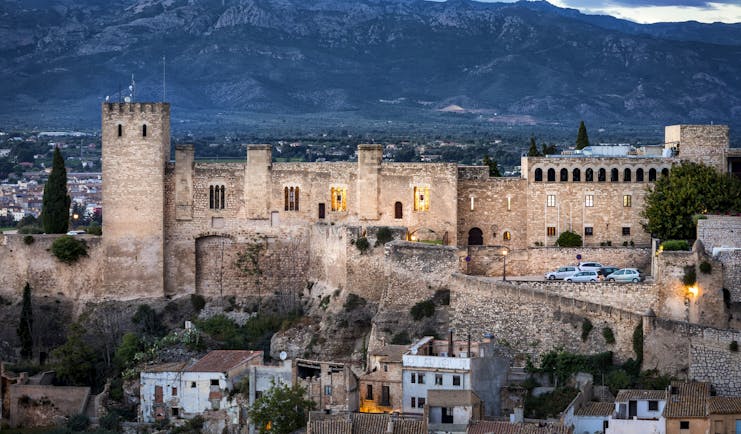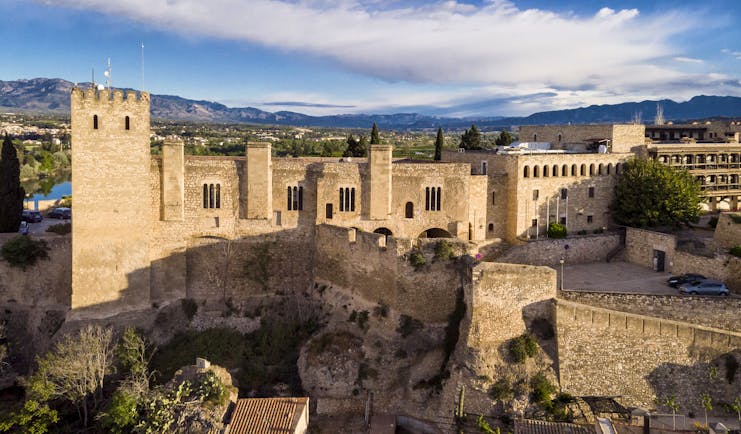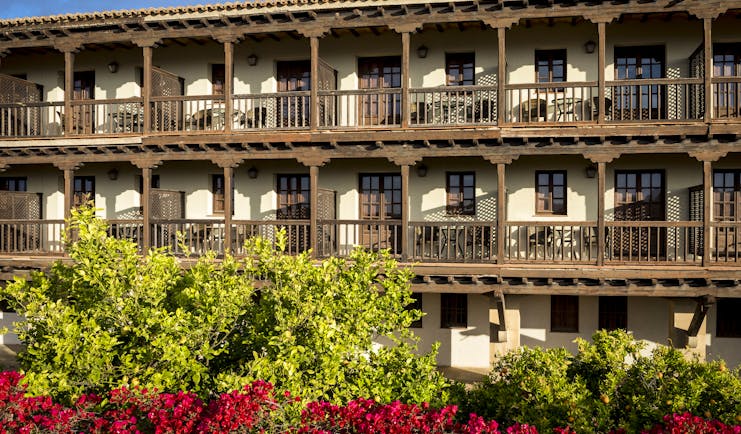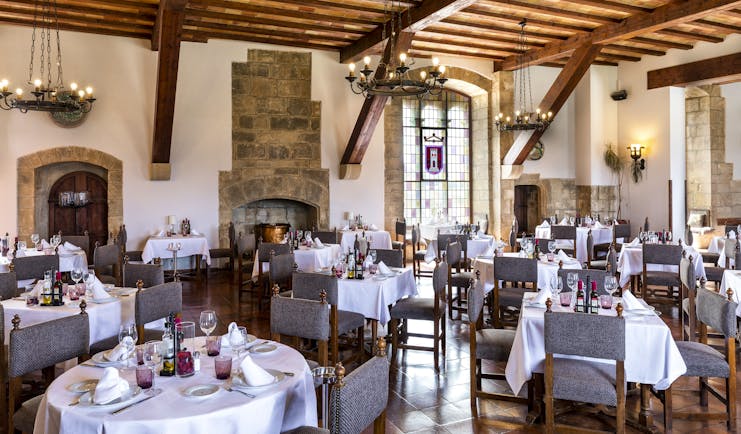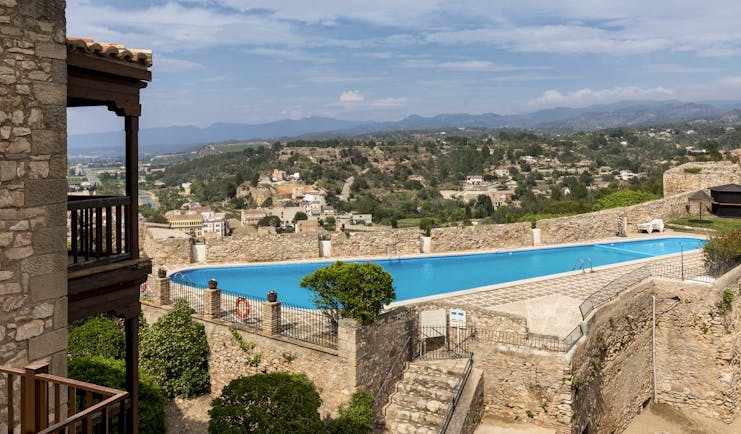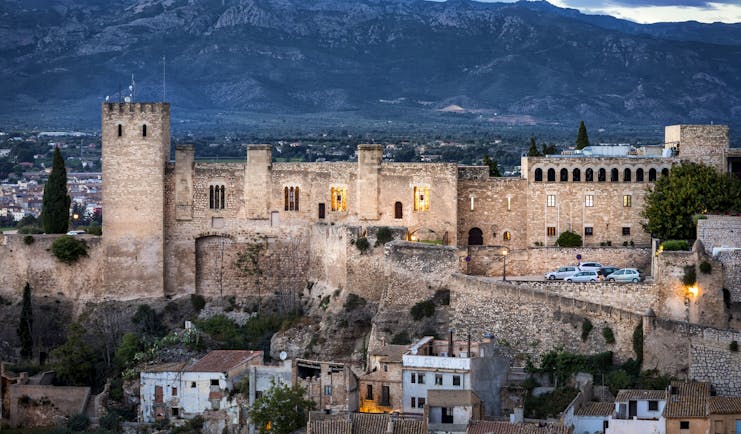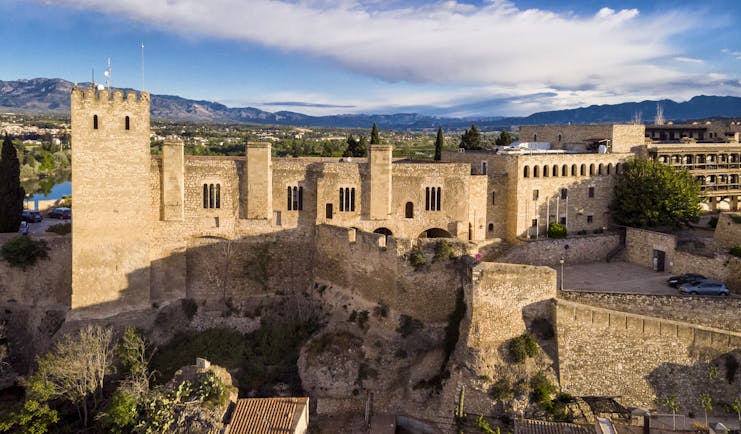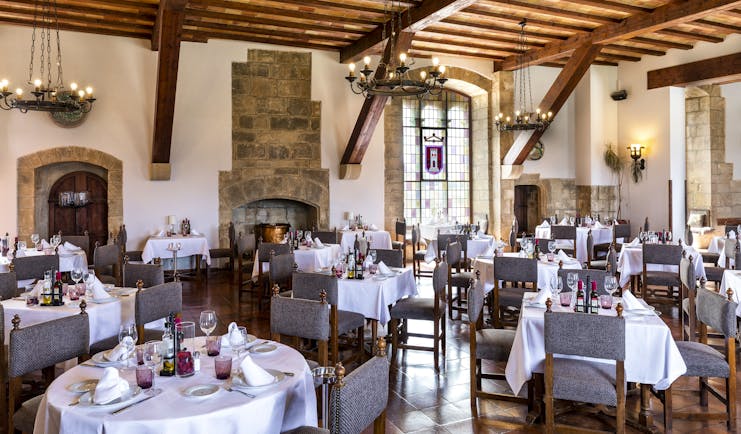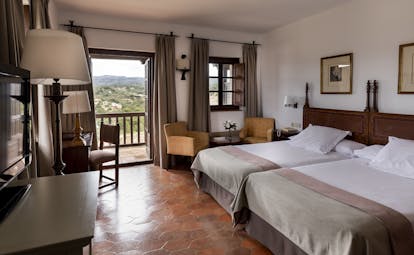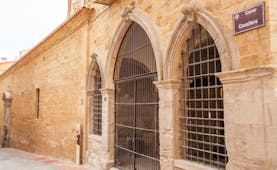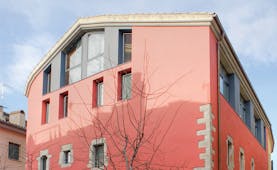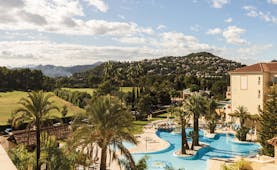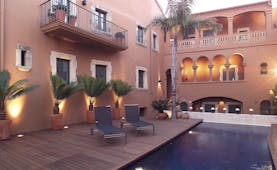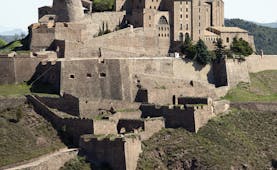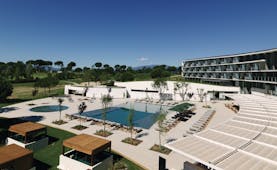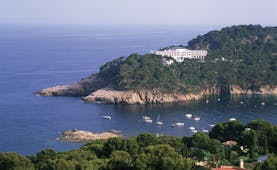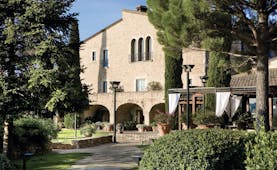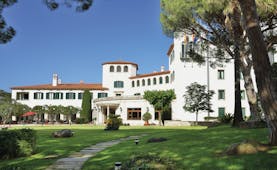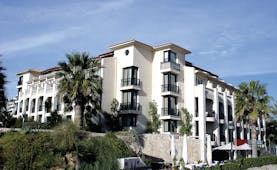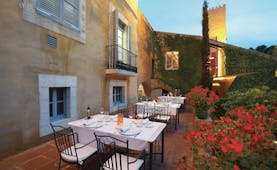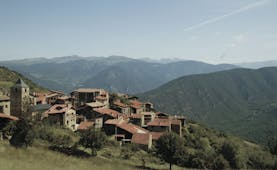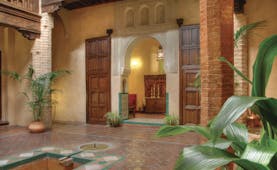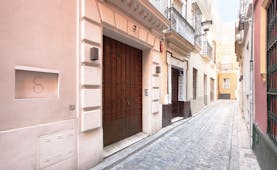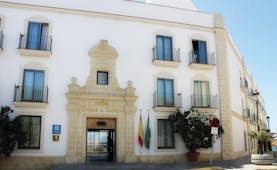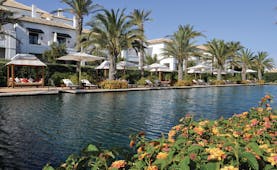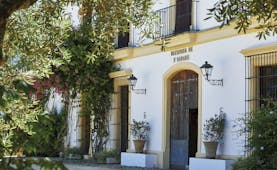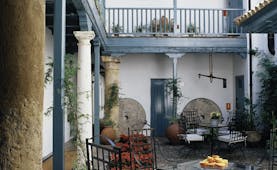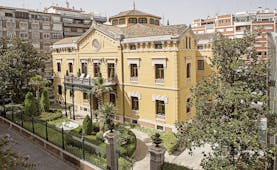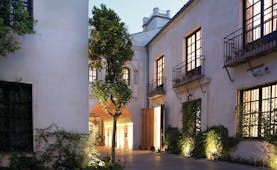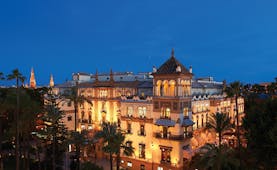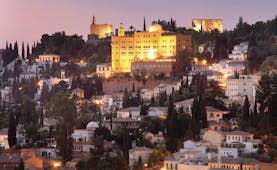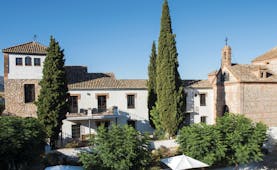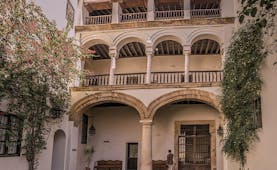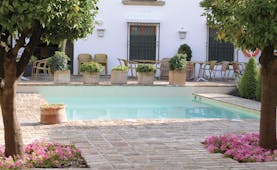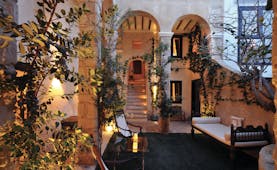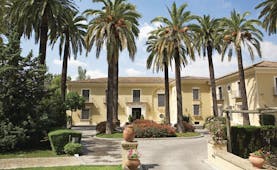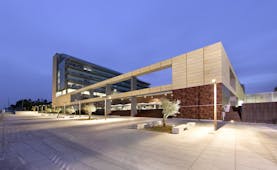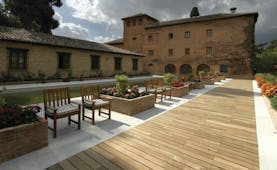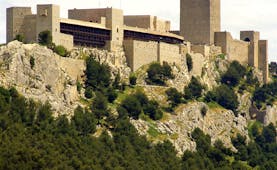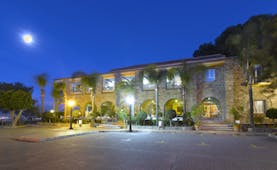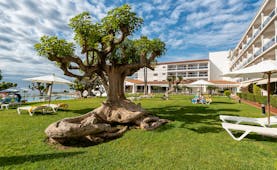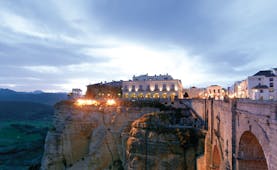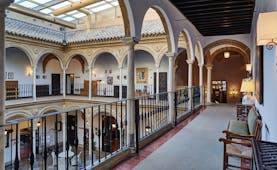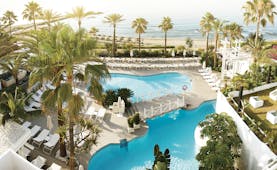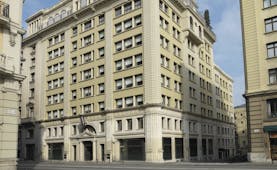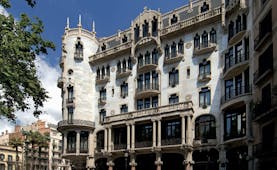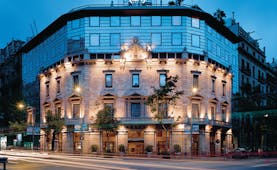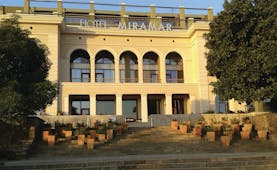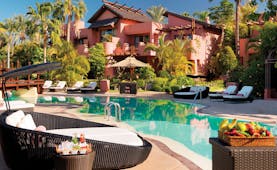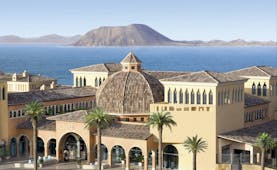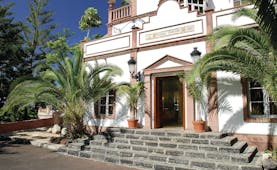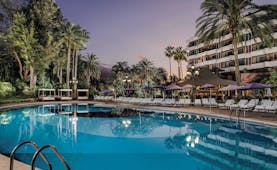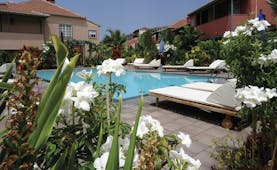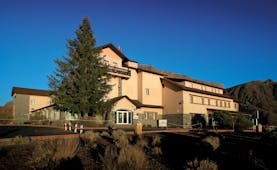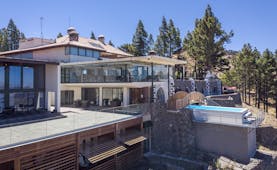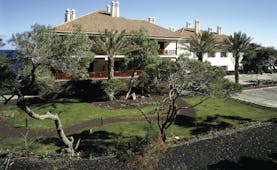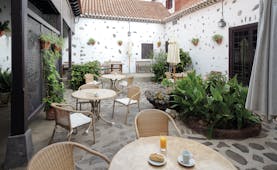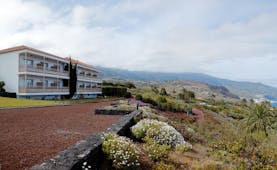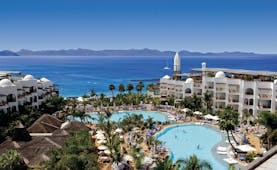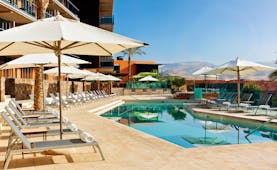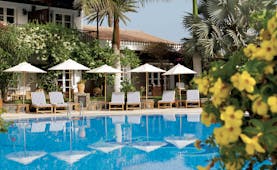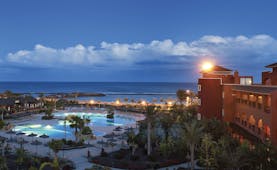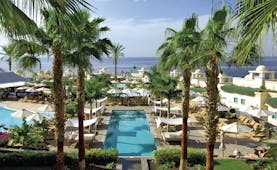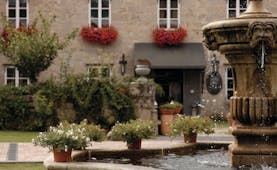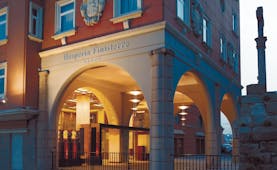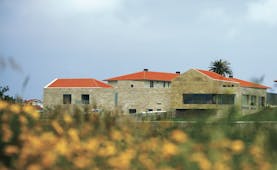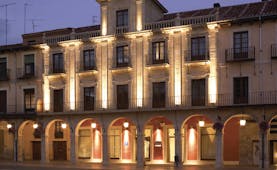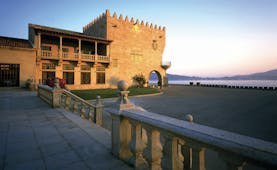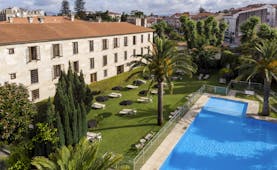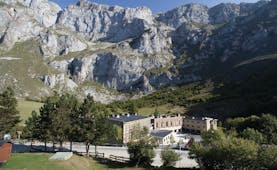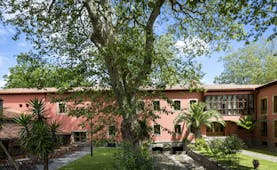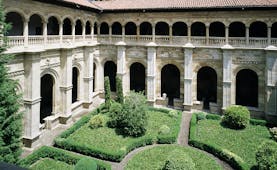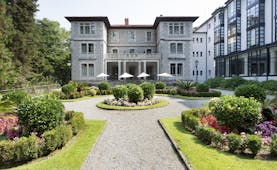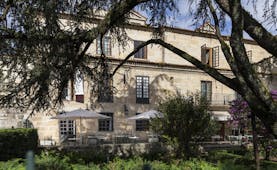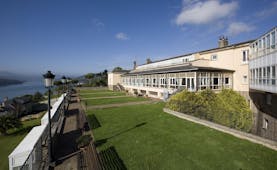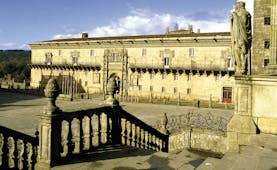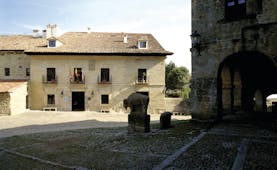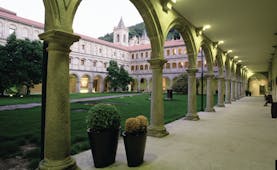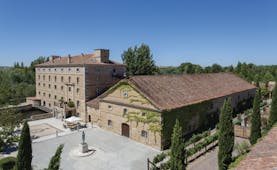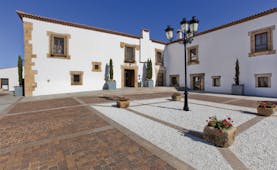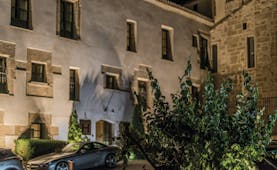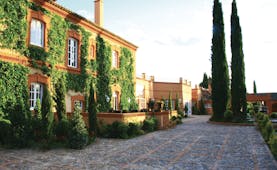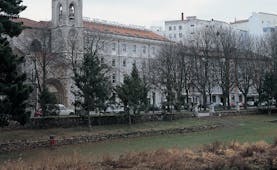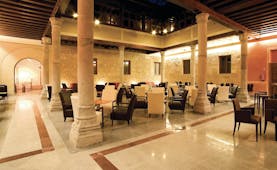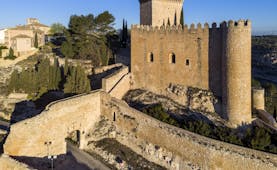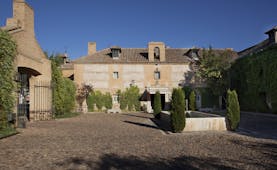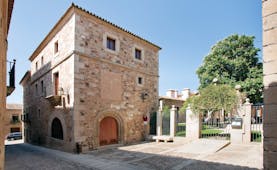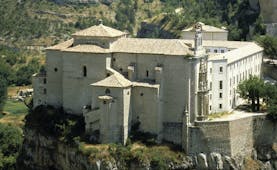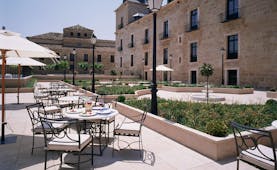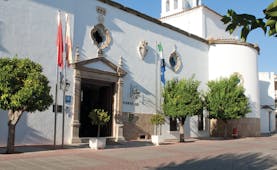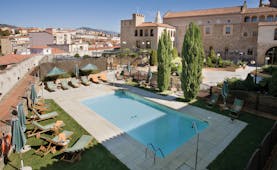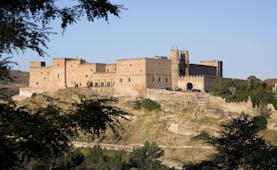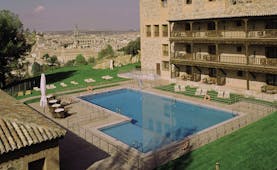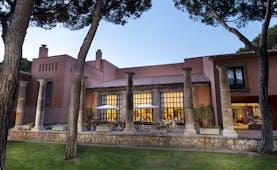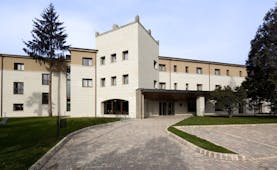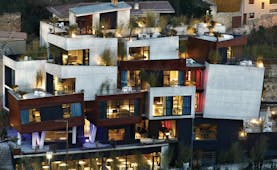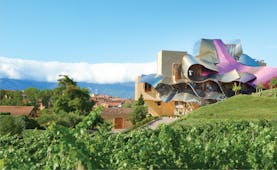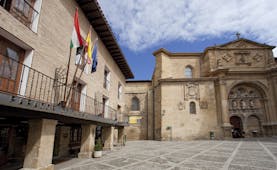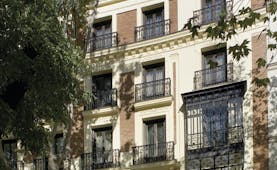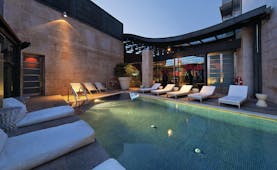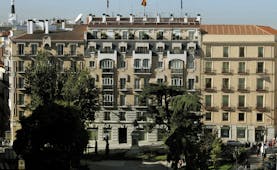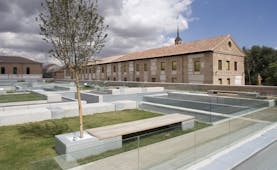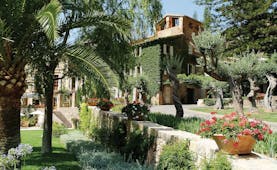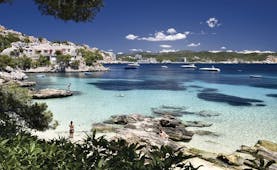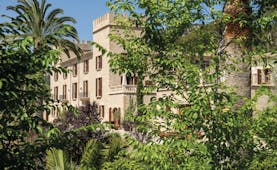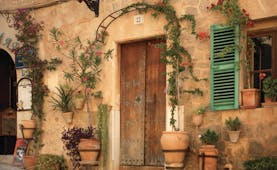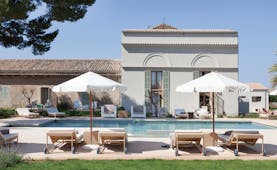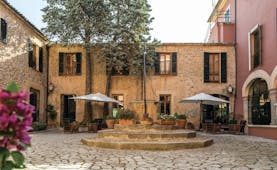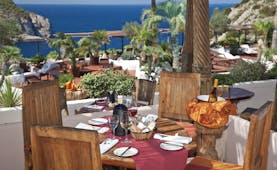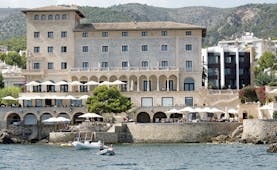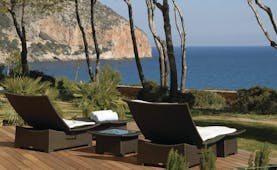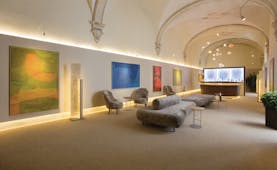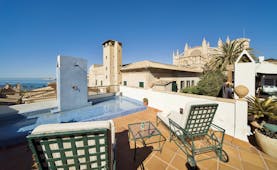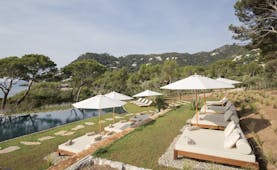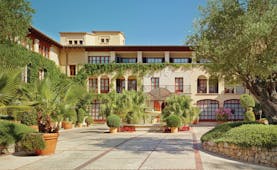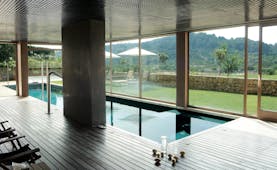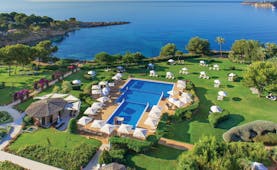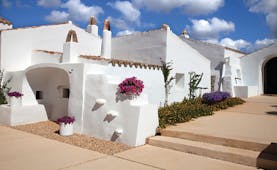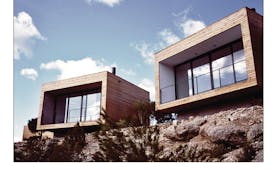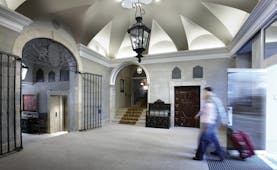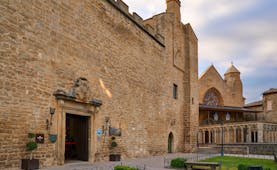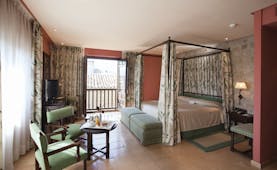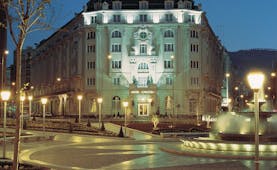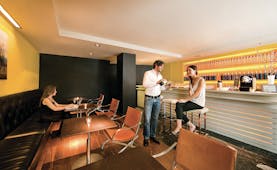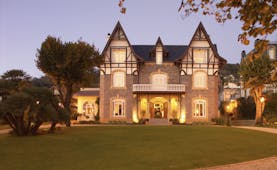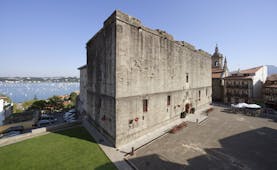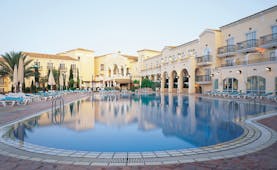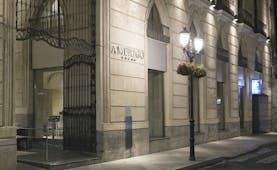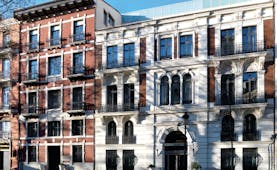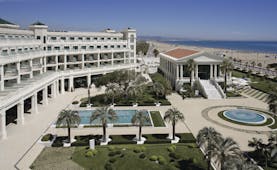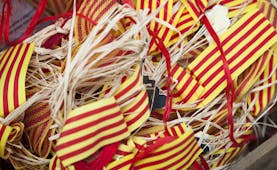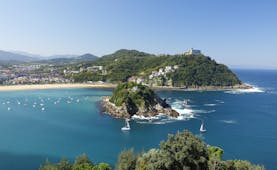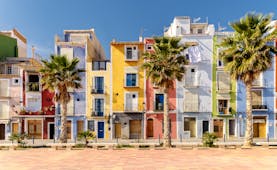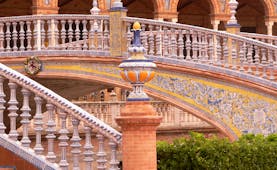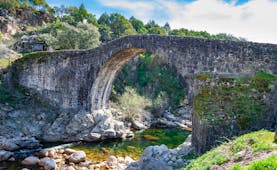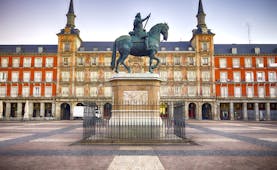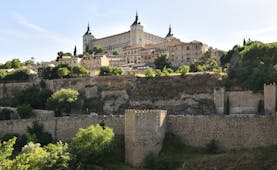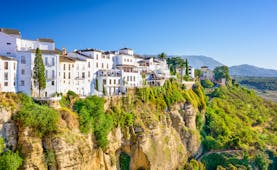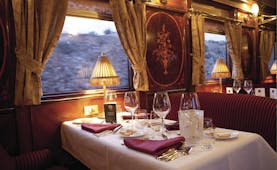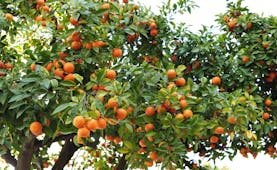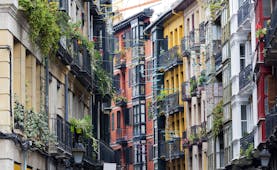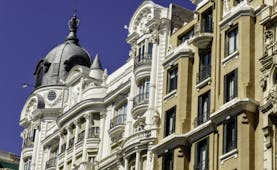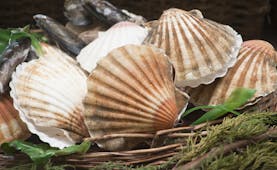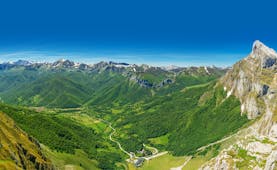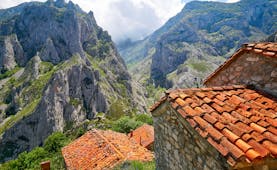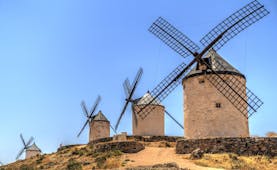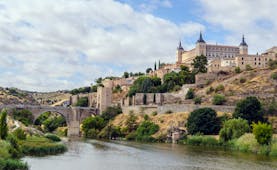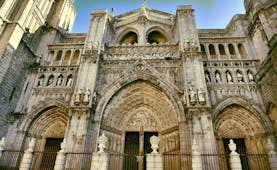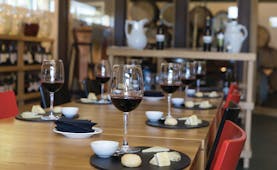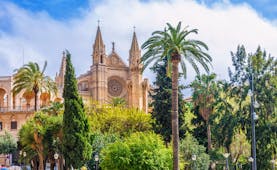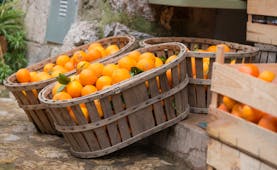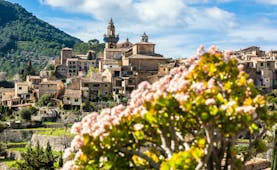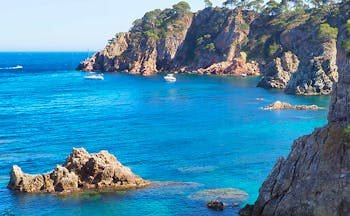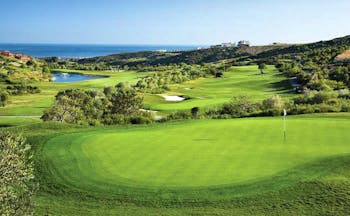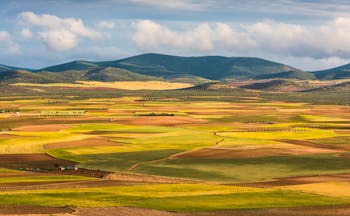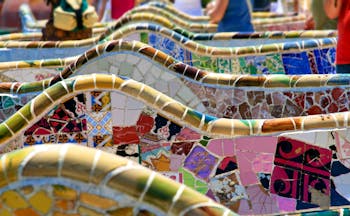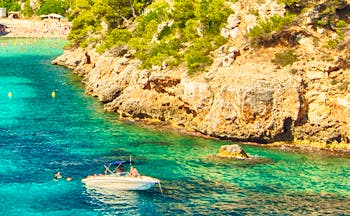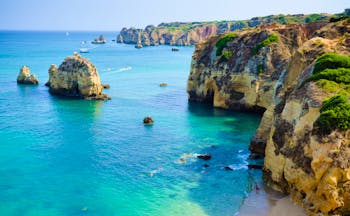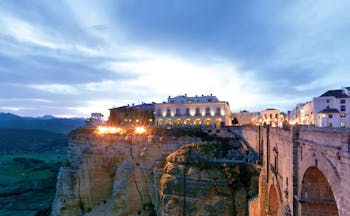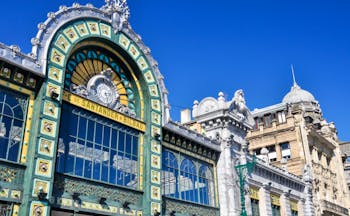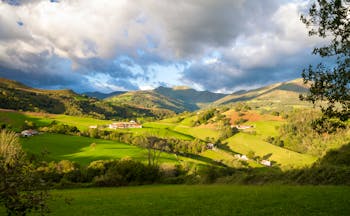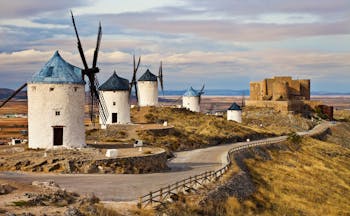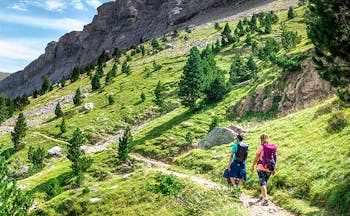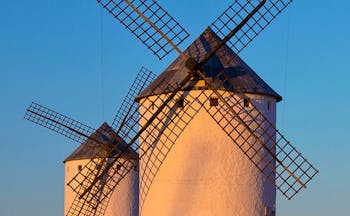Luxury bespoke hotel holidays to the Parador de Tortosa
Facts in brief
Official star rating 4
Location The Parador de Tortosa is set within the historic Zuda Castle. The parador is a 5-minute walk to the beautiful Santa Maria Cathedral. It is located 30 kilometres away from the Port of Tortosa.
Annual opening Open all year
Closest airport Barcelona El Prat
Distance from airport Tortosa
Closest railway station 169 km
Distance from railway station 2 km
Hotel facilities and services
Restaurant, café, bar, outdoor swimming pool (seasonal), garden, laundry, private parking.
Out and about nearby
In the historic city of Tortosa, you will find many cultural treasures including the beautiful Santa Maria Cathedral, Mirabel Castle and the open-air sculpture museum. There is a lovely route around the walls and fortifications of the city which starts at the parador and passes several attractions such as the Celio Tower and the Inmaculada Square. Just outside of the city, in Horta de san Joan, you will find the Picasso Museum.
Sports nearby
Golf, boat rides, punting, canyoning, mountain biking, hiking, kayaking, paddle tennis, river fishing, windsurfing
We had a wonderful holiday which exceeded our expectations. Great hotels with a good itinerary. We wouldn't hesitate to use your services again.Mrs J, June 2025
Holiday price guide Sample prices are per person based on two people sharing a Standard double room for 3 nights for a fly-drive holiday.
From about
£590
Holiday Code EXH2006
The prices displayed here are a guide only. Each holiday price will be tailor-made at the time of booking to reflect all actual costs including up-to-date special offers.
Call us on 01392 441245
Luxury bespoke hotel holidays to the Parador de Tortosa
The Parador de Tortosa is a historic 4-star hotel which towers over Tortosa, giving tremendous views of the city and the River Ebro. Tortosa’s position at the mouth of the River Ebro where the River Delta begins, means that the city enjoys a Mediterranean climate and charm. The hotel itself is located in the 10th-century Zuda Castle and maintains many of its original features, including large gothic windows in the dining room. The hotel has 77 comfortable rooms in total. The parador also has its own restaurant which serves Mediterranean dishes. Some of its dishes includes the traditional rice which is grown in the Ebro Delta. From the hotel’s restaurant, you can enjoy views of the river, the mountains of Montecaro, the city’s old quarter and the chapel terrace. This hotel also has a large outdoor swimming pool which is open throughout the summer season. There is lots to see and do in the City of Tortosa including the Celio Tower, Inmaculada Square, the Avanzadas de San Juan and the beautiful Santa Maria Cathedral. Many of these sites can be visited on foot or by bicycle following the route around the walls and fortifications. In the second half of July, the Renaissance Festival brings big celebrations with street performances and people dressed in period costume. We recommend a stay at the Parador de Tortosa for a short, luxury break or as part of a longer touring holiday in this region.
Room descriptions
Parador de Tortosa has 77 rooms, each with air-conditioning, heating, private bathroom, complimentary Wi-Fi, safe, television, telephone and hairdryer.
We had a wonderful holiday which exceeded our expectations. Great hotels with a good itinerary. We wouldn't hesitate to use your services again.Mrs J, June 2025
Holiday price guide Sample prices are per person based on two people sharing a Standard double room for 3 nights for a fly-drive holiday.
From about
£590
Holiday Code EXH2006
The prices displayed here are a guide only. Each holiday price will be tailor-made at the time of booking to reflect all actual costs including up-to-date special offers.
Call us on 01392 441245
Luxury bespoke hotel holidays to the Parador de Tortosa
The journey and how you get there
For a holiday to the Parador de Tortosa, our clients usually hire a car from Barcelona airport and include the hotel as part of a fly-rail or fly-drive touring holiday. We include flights from London and a hire car or rail travel, depending on what you would like to do and what is most appropriate to your overall journey.
Additional information
Children: An extra bed for a single child can be added in all room types.
We had a wonderful holiday which exceeded our expectations. Great hotels with a good itinerary. We wouldn't hesitate to use your services again.Mrs J, June 2025
Holiday price guide Sample prices are per person based on two people sharing a Standard double room for 3 nights for a fly-drive holiday.
From about
£590
Holiday Code EXH2006
The prices displayed here are a guide only. Each holiday price will be tailor-made at the time of booking to reflect all actual costs including up-to-date special offers.
Call us on 01392 441245
Luxury bespoke hotel holidays to the Parador de Tortosa
About Catalonia and Eastern Spain
An Expressions tailor-made holiday to eastern Spain feature some of the best four and five star hotels in Catalonia and Valencia, including luxury beach resorts on the Costa Brava, mountain retreats in the Catalan Pyrenees and city hotels in Barcelona and Valencia. Eastern Spain is a diverse area with buzzing cities and mediaeval towns, rugged coastline and sandy beaches, soaring mountains and lush river deltas. There is a great wealth of historical and cultural sights throughout Catalonia and the Valencian community, both within the main cities and hidden away in the countryside. Although Barcelona is the main draw for visitors to eastern Spain, the rest of the region is well worth visiting and offers tremendous diversity. During a holiday in eastern Spain, visitors can trek or partake in mountain sports, relax on the beach and visit historic towns and cities all within the space of a few days. Catalonia itself is a unique region which provided inspiration for a number of famous artists such as Dali and Picasso, and retains a strong regional identity which is evident in its language, distinctive cuisine and lively local festivals. In the north is Catalonia, whose capital is the dynamic and cosmopolitan city of Barcelona. With unique architecture and a rich culture, gourmet restaurants and lively bars, golden beaches and tranquil parks, it is not surprising that Barcelona is one of the most visited cities in Europe. Away from the city there is an abundance of cultural and historical attractions as well as areas of stunning natural beauty. The entire region retains a strong regional identity, with its own commonly used language, distinctive cuisine and lively local festivals. Towns and cities including Girona, Tarragona, Vic and Lleida are home to a variety of highlights including mediaeval castles, cobbled old towns, ancient Roman ruins and modernist architecture. Stretching north towards the French border are the pretty coves, jagged cliffs and golden beaches of the Costa Brava, where you can still find wild and untouched stretches of coastline in between busy coastal towns. Meanwhile, inland are the snow-capped Pyrenees, a towering mountain range which forms the border with France and is dotted with remove villages, an ideal setting for trekking and partaking in mountain sports. Past the vineyards and rice fields of southern Catalonia is the Valencian Community, whose capital is Spain's third-largest city. Valencia has reinvented itself in recent years with futuristic architecture and a sophisticated port area which contrast with the historic buildings of the atmospheric old town. Further south are the sprawling beach resorts of the Costa Blanca, but if you head away from the Valencian coastline you will find craggy mountains, peaceful nature reserves, colourful citrus groves, traditional villages and ancient fortresses.
Highlights of Catalonia and Eastern Spain
Barcelona's Gothic quarter, a maze of narrow streets and plazas which is home to historic buildings including La Seu Cathedral. Modernist architecture throughout the region, particularly in Barcelona where Gaudí designed works including the Sagrada Familia church and Park Guell. Green spaces within Barcelona such as Montjuic, a fortress-topped hill, and Parc de la Ciutatella, a popular park with a zoo and several museums. The City of Arts and Sciences and the Fine Arts Museum in Valencia. Historic monuments within Valencia including a 15th century silk exchange and a Cathedral, home to a Holy Chalice which is said to be the Holy Grail. The Monastery of Montserrat, a religious complex in a spectacular setting atop craggy mountains with chapels, hermits' caves and numerous nature trails. Wineries in towns such as Sant Sadurní d'Anoia and Vilafranca del Penedès. Tarragona, a port city with fascinating Roman remains. The ancient walled city of Girona. Vic, a quintessentially Catalan town with an outstanding market. Cardona, a picturesque town with an impressive fortress. The renowned Dalí Theatre-Museum in Figueres. Charming towns along the Costa Brava such as Cadaques, as well as those further inland such as the colourful town of Begur. Pretty villages in the Pyrenees, where visitors can also hike and partake in mountain activities. Wildlife in the wetlands of the Albufera Natural Park.
Festivals in Catalonia and Eastern Spain
March: Las Fallas festival of fire (Valencia), 23 April: Celebration of Catalonia's patron saint, April: Barcelona April Fair, May: Girona flower fair, 23 June: Midsummer's Eve Festival, July: Valencia July Fair, July/August: Begur Music Festival, August: La Tomatina tomato throwing festival (Buñol), 11 September: National day of Catalonia, September: Celebration of Barcelona's patron saint, September/October: Human tower festivals (near Tarragona).
Gastronomy in Catalonia and Eastern Spain
Cuisine in eastern Spain takes inspiration from both nearby France and from central Spain whilst making use of local ingredients available including seafood, fresh vegetables, meat and game. Paella, the rice dish which is known the world over originated in Valencia. Barcelona is home to some of Spain's best restaurants, with gastronomic chefs creating innovative cuisine and over 20 boasting at least one Michelin star. Typical dishes include unusual ‘sea and mountain' combinations which use both meat and seafood, ‘Pa amb tomàquet' (bread with tomato, oil and garlic), ‘Fideuá' (a variant of Paella with pasta), ‘Zarzuela' (a seafood stew), ‘Escudella’ (a stew containing vegetables, meat, rice and pasta) and ‘Crema Catalana' (a Catalan version of a Crème Brûlée).
Climate in Catalonia and Eastern Spain
Eastern Spain enjoys a typical Mediterranean climate, although mountainous areas are somewhat cooler. Late spring and early autumn are great times to visit coastal areas as the weather is warm with temperatures of around 20 degrees centigrade, although some rainfall can be expected. Summer in the cities can be unbearably hot, but the coastline is cooled by sea breezes. Winter is generally mild with occasional rain and average temperatures of 10 degrees, whilst temperatures regularly drop below freezing in the Pyrenees and snow often falls.

